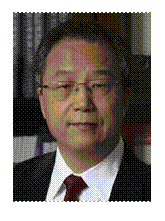Luyuan Li, PhD
Professor of Pharmacology, College of Pharmacy
Nankai University, Tianjin, China
Email: liluyuan@nankai.edu.cn

Professor Luyuan Li obtained his BS degree in Biochemistry from Sichuan University, Chengdu, China, in 1982, and his PhD degree from Cornell University Medical School, New York, the United States in 1988, also in Biochemistry. Having completed his postdoctoral training in the Department of Chemistry at Pennsylvania State University, he joined the Lederle Laboratory in New York in 1991 as a Senior Scientist. He joined the faculty of Georgetown University Medical Center, Washington, DC, in 1995, as an Assistant Professor of Biochemistry and Molecular Biology, and a Member of the Lombardi Cancer Center. He moved to University of Pittsburgh School of Medicine in 2002 as an Associate Professor of Pathology and Member of the UPMC Hillman Cancer Center, and Member of McGowan Institute for Regenerative Medicine. He moved to China in 2008 to join the faculty of Nankai University, Tianjin, and has been a Professor of Pharmacology in Nankai University College of Pharmacy. Research in Li laboratory has focused on vascular and lymphatic endothelial cell biology and the molecular mechanisms of modulation of tumor hypoxic microenvironment. His work has contributed to the discovery of human tumor necrosis factor superfamily-15 (TNFSF15) and human rhomboid family-1 (RHBDF1) genes and their functions. His study on human angiopoietin-1 gene leads to the proposal of the hypothesis that stabilization of tumor neovasculature with vascular smooth muscle cells may inhibit tumor growth. Professor Li has published over 120 papers, with a H-index of 35, in Angiogenesis, Blood, Cancer Research, Cell Research, Circulation Research, Journal of Biological Chemistry, Journal of Immunology, Journal of Pathology, the FASEB Journal, Proceedings of the National Academy of Sciences USA, Protein and Cell, and Signal Transduction and Targeted Therapy, among others.
Selected Recent Publications:
A Protective Role of Tumor Necrosis Factor Superfamily-15 in Intracerebral Hemorrhage-Induced Secondary Brain Injury. GL Yang et al. ASN Neuro 13, 1-12, 2021
RHBDF1 promotes AP-1-activated endothelial–mesenchymal transition in tumor fibrotic stroma formation. S Gao et al. Signal transduction and targeted therapy 6, 1-4, 2021
Matrix Metalloproteinase-9-Responsive Surface Charge-Reversible Nanocarrier to Enhance Endocytosis as Efficient Targeted Delivery System for Cancer Diagnosis and Therapy. QJ Han et al. Advanced Healthcare Materials 10 (9), 2002143, 2021
High-throughput screening in postimplantation haploid epiblast stem cells reveals Hs3st3b1 as a modulator for reprogramming. Q Gao et al. Stem cells translational medicine 10 (5), 743-755, 2021
TNFSF15 facilitates human umbilical cord blood haematopoietic stem cell expansion by activating Notch signal pathway. Y Ding et al. Journal of cellular and molecular medicine 24 (19), 11146-11157, 2020
Inhibition of apoptosis reduces diploidization of haploid mouse embryonic stem cells during differentiation. W Zhang et al. Stem cell reports 15 (1), 185-197, 2020
VEGI Improves Outcomes in the Early Phase of Experimental Traumatic Brain Injury. Z Zhou et al. Neuroscience 438, 60-69, 2020
Inhibition of intracranial hemangioma growth and hemorrhage by TNFSF15. GL Yang et al. The FASEB Journal 33 (9), 10505-10514, 2019